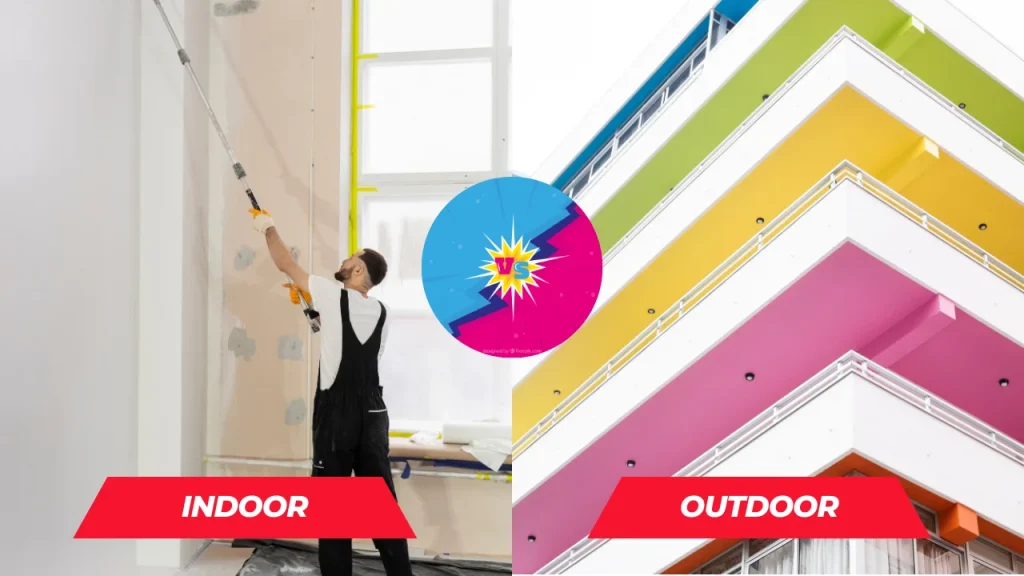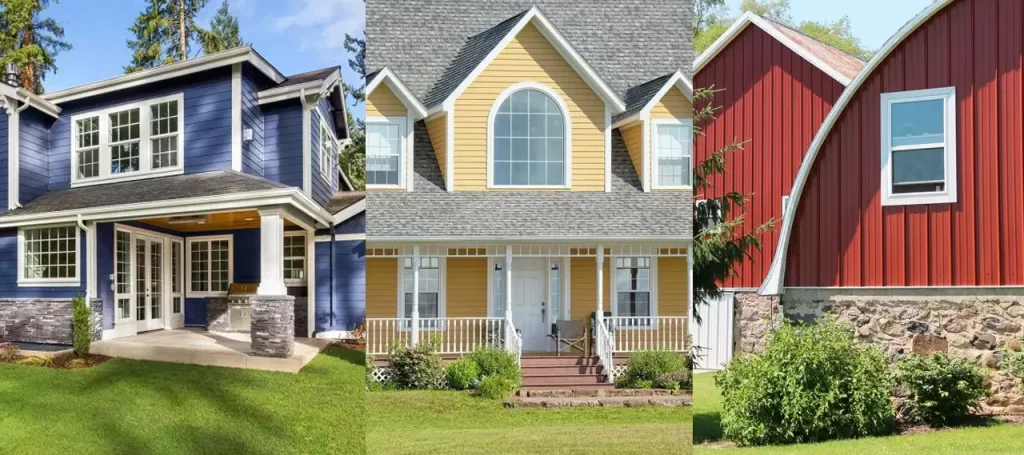
Understanding the differences between interior vs. exterior paints is essential before starting a painting project. Although they both have the same function of giving surfaces color and protection, each kind is individually designed to meet the requirements of its designated location.
Knowing the compatibility of various paint kinds is crucial, whether you’re planning to paint a room inside your house or improve the appearance of your property’s exterior. Join us as we explore the world of indoor and outdoor paints, explaining the complexity and using exterior paint indoors of the best solutions for your particular need.
You can assure good and long-lasting indoor paint colors that not only enhances your area but also improves its endurance and performance by developing a deeper grasp of interior and exterior paints. Let’s explore the fascinating world of indoor and outdoor painting and learn which options are ideal for your upcoming painting project.
Understanding the Differences: Indoor vs. Outdoor Paint

It’s important to distinguish between the best interior and exterior paint when painting jobs are involved. Understanding indoor and outdoor differences is crucial for producing effective and long-lasting effects since they are each designed to satisfy the unique requirements of their respective settings.
You can choose the best paint for your project by being well informed about the particular characteristics and factors related to both interior and exterior paint. Knowing the distinctions can help you pick the best paint for the job, whether you’re using interior paint on exterior surfaces or giving your outside surfaces a new appearance.
Exterior and interior paint are fundamentally different from one another. The main variations between the two are as follows:
- Weather Resistance and Sturdiness
It is more resilient to fading, cracking, and peeling and has improved durability. On the other hand, interior paint is made to withstand typical use in climate-controlled indoor situations.
- Adherence and Adaptability
In order to handle the change in size of construction materials brought on by temperature changes, it is also more flexible. Indoor paint is designed to cover interior walls and trim in a smooth and uniform manner.
- UV Shielding
The UV-blocking ingredients in exterior paint shield the paint against degradation and color fading. Since interior paint is not exposed to direct sunlight, this functionality is not required.
- Amount of VOCs
Chemicals called volatile organic compounds (VOCs) can be emitted into the atmosphere during the application and drying of paint. Because exterior paint must work better outside, it often contains more VOCs. In order to protect interior air quality, indoor paint is made with reduced VOC levels.
- Colors and Finishes
To accommodate various tastes in interior design, indoor paint comes in a broader variety of color choices, finishes, and sheens. More neutral and earthy tones that blend in with the surroundings are the focus of exterior paint.
Choosing the Right Paint: Comparing Indoor and Outdoor Options

Knowing the differences between indoor and outdoor alternatives is essential when choosing paint for your projects. Indoor paint colors are designed for indoor application and include qualities like low VOC content, a variety of colors, and different finishes. On the other hand, outdoor paint is made to survive the elements and offers toughness, UV resistance, and moisture protection.
Take into account the particular needs of your project while selecting the paint for interior use. Choose indoor paint with the appropriate color and finish for inside walls, ceilings, and trimmings. For endurance, furniture painting may need specialized paints like enamel or latex. Weather-resistant outdoor paint is required for outside surfaces such as siding and trim.
When choosing the right kind of paint for your indoor painting jobs, it is crucial to take the paint suitability for interior use into account. You may confidently choose the ideal paint for the project by being aware of the differences and taking the project’s requirements into account. For further assistance in selecting the ideal paint for your unique interior and exterior projects, speak with experts or professionals.
Is It Safe to Use Exterior Paint Inside? Exploring the Pros and Cons
It’s typical for homeowners to worry if it’s safe to use outside paint inside their residential property while doing painting chores. Although exterior paint is designed primarily for outside usage, some individuals might think of applying it indoors because of its durability or range of color options. Understanding the possible dangers and disadvantages of this strategy is crucial, though.
Discover the advantages and disadvantages of applying outside paint inside, which will provide you with important information that will aid in your decision-making. We will examine the qualities and elements of outside paint, talk about any potential health issues, and take into account the effect on indoor air quality.
Pros
- designed to endure challenging external conditions, making interior surfaces more durable.
- contains UV-protective chemicals, which can help prevent paint color fading on interior surfaces close to windows.
- used in places like bathrooms or kitchens that are prone to excessive humidity or moisture since it is designed to repel moisture.
- offers a wider variety of hues and tones, giving interior spaces more possibilities for obtaining the desired style.
- used when painting some difficult interior surfaces because these paints are designed to stick effectively to a variety of surfaces.
Cons
- has more volatile organic compounds (VOCs) than interior paint, which might result in greater scents and could have an effect on indoor air quality.
- intended to dry more slowly, which, when used inside, may mean longer drying periods.
- have a heavier consistency and texture, making it harder to finish interior surfaces smoothly.
- provides fewer sheen possibilities than inside paint, which could make it harder for you to get the exact finish you want.
Before utilizing outside paint indoors, it’s necessary to carefully weigh these advantages and disadvantages. It may have some benefits, but it’s important to balance these against any potential disadvantages and health issues.
The Impact of Using Exterior Paint Inside: Considerations and Effects

Exterior paint is made especially for outside use and is intended to endure the environment and offer durable protection. It has different properties and a different composition than interior paint on exterior surfaces; therefore, utilizing it indoors can have a number of significant impacts and implications.
a. Health Concerns and Respiratory Issues
Higher concentrations of volatile organic compounds (VOCs), which can contribute to interior air pollution and pose health hazards, are frequently found in exterior paint. Particularly for those with sensitivities or respiratory diseases, prolonged exposure to VOCs can cause respiratory problems, allergies, and other health difficulties.
b. Unpleasant Odor and Longer Drying Time
Due to its higher VOC content than interior paint, exterior paint has a tendency to have a harsher stench. Residents may find the lingering fragrance unpleasant as a result. Furthermore, outside paint often takes longer to cure, which might increase the time until the painted area is completely functional.
c. Difficulty in Maintaining and Cleaning the Painted Surfaces
It might be more difficult to clean and preserve exterior paint on interior surfaces because it is normally made to endure the environment. Its heavier consistency and texture could make it more difficult to get a flawless finish, and it might also retain dirt and grime, which would make cleaning tougher.
d. Potential for Premature Peeling, Cracking, or Fading
Exterior paint for interior use could not offer the same degree of adhesion, flexibility, or color retention. Due to the various environmental factors and contact related to its intended outside application, interior finishes may be more susceptible to early peeling, cracking, or fading.

